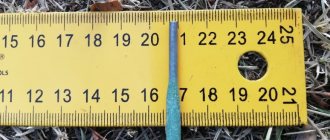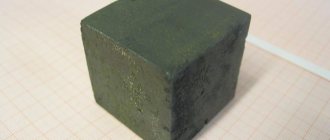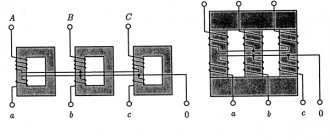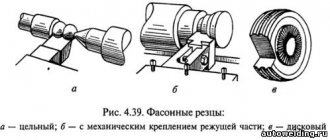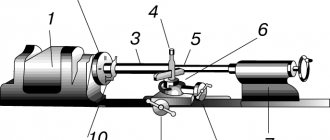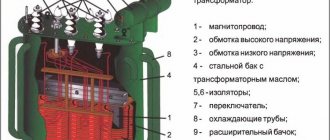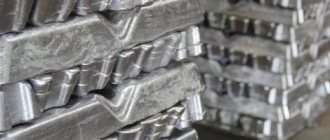Chemical properties
- When heated, it easily loses water:
Sn(OH)2 →60−120oC SnO + H2O
- Shows amphoteric properties, dissolves in acids:
Sn(OH)2 + 3 HCl → H[SnCl3] + 2 H2O
- and alkalis:
Sn(OH)2 + NaOH → Na[Sn(OH)3]
| Tin compounds | |
| |
Bronze.
Long before they learned to extract tin in its pure form, an alloy of tin and copper was known - bronze, which was apparently obtained already in 2500-2000 BC.
Tin in ores is often found together with copper, so when copper was smelted in Britain, Bohemia, China and southern Spain, not pure copper was formed, but an alloy of it with a certain amount of tin. Early copper carpentry tools (chisel, adze, etc.) from Ireland contained up to 1% Sn. In Egypt, copper utensils of the 12th Dynasty (2000 BC) contained up to 2% Sn, apparently as an incidental impurity. The primitive practice of copper smelting was based on the use of a mixture of copper and tin ores, resulting in bronze containing up to 22% Sn. Table: Properties of b-TIN
| PROPERTIES of b-TIN | |
| Atomic number | 50 |
| Atomic mass | 118,710 |
| Isotopes | |
| stable | 112, 114–120, 122, 124 |
| unstable | 108–111, 113, 121, 123, 125–127 |
| Melting point, °C | 231,9 |
| Boiling point, °C | 2625 |
| Density, g/cm3 | 7,29 |
| Brinell hardness) | 3,9 |
| Content in the earth's crust, % (mass.) | 0,0004 |
| Oxidation states | +2, +4 |
Tin(II) chloride, or stannous chloride
SnCl2•2H2O is obtained by dissolving tin in hydrochloric acid and forms colorless crystals with two molecules of water of crystallization. When heating or strongly diluting a SnCl2 solution with water, partial hydrolysis occurs with the formation of a precipitate of the main salt:
SnCl2 + H2O ⇄ ↓SnOHCl + HCl
Stannous chloride is an energetic reducing agent.
So, for example, ferric chloride FeCl3 is reduced by it into ferric chloride FeCl2:
2FeCl3+ SnCl2 = 2FeCl2 + SnCl4
When tin chloride acts on a solution of sublimate, a white precipitate of calomel is formed. With an excess of SnCl2, the reduction goes even further and metallic mercury is obtained:
2HgCl2 + SnCl2 = ↓ Hg2Cl2 + SnCl4
Hg2Cl2 + SnCl2 = 2Hg + SnCl4
Tetravalent tin compounds. Tin dioxide
SnO2 occurs naturally in the form of tinstone, the most important ore of tin. It can be produced artificially by burning the metal in air or by oxidizing it with nitric acid, followed by calcination of the resulting product. Used for preparing various white glazes and enamels.
Isotopes
Main article: Tin isotopes
Natural tin consists of ten stable nuclides with mass numbers 112 (in a mixture of 0.96% by mass), 114 (0.66%), 115 (0.35%), 116 (14.30%), 117 (7. 61%), 118 (24.03%), 119 (8.58%), 120 (32.85%), 122 (4.72%) and 124 (5.94%). For some of them, double beta decay is energetically possible, but it has not yet been observed experimentally (2014) because the predicted half-life is very long (more than 1020 years).
Tin has the largest number of stable isotopes of all elements, which is due to the fact that 50 (the number of protons in tin nuclei) is the magic number - it constitutes a filled proton shell in the nucleus and thereby increases the binding energy and stability of the nucleus. Two doubly magic isotopes of tin are known, both of them are radioactive, since they are far from the beta stability band: neutron-deficient 100Sn (Z = N = 50) and neutron-rich 132Sn (Z = 50, N = 82).
Tin isotopes 117Sn and 119Sn are Mössbauer isotopes and are used in gamma resonance spectroscopy.
Determination of the structure of the valence electron layer of elemental atoms
Problem 188. The structure of the valence electron layer of an element’s atom is expressed by the electronic formula: a) 5s25p4; b) 3d54s1. Determine the serial number and name of the element.
Solution: a) The valence electron layer 5s25p4 indicates that the atom of the element has five electronic energy levels, which means the atom is located in the fifth period.
The presence of two 5s and four 5p electrons on the outer energy level indicates that this element belongs to the family of p-elements and is located in the sixth group of the main subgroup of D. I. Mendeleev’s periodic system. In the fifth period of the sixth group there is an element with serial number 52 (tellurium).
b) The electronic configuration of the valence layer 3d54s1 indicates that the atom is in the fourth period (n = 4), belongs to d-elements (presence of a 3d sublevel) and is an element of the sixth group of the secondary subgroup. This state corresponds to an element with serial number 24 (chrome).
Answer: Te; Cr.
Task. 189. The electronic structure of an atom is described by the formula: 1s22s22p63s23p63d64s2.
What element is this? Solution: Since the number of electrons in an atom of an element is equal to its serial number in the table D.I.
Mendeleev, then for an element with an electronic structure described by the formula 1s22s22p63s23p63d64s2, the atomic number is 26 (the total number of electrons is 26). At number 26 in D.I. Mendeleev’s table is iron.
Problem 190. Write the electronic formulas of the ions: a) Sn2+; b) Sn4+; c) Mn2+; d) Cu2+; e) Cr3+; e) S2-. Solution: a) The electronic formula of tin is: 1s22s22p63s23p63d104s24p64d105s25p2. Having donated two atoms from the 5p sublevel, tin turns into the Sn2+ ion, which has the electronic formula:
1s22s22p63s23p63d104s24p64d105s25p0
b) The tin atom, having given up four electrons, two from the 5p sublevel and two from the 4s sublevel, the tin atom turns into the Sn4+ ion. The electronic formula of the tin ion Sn4+ is: 1s22s22p63s23p63d104s24p64d105s05p0.
c) The electronic formula of manganese is: 1s22s22p63s23p63d54s2. When two electrons are lost from the 4s sublevel, the manganese atom turns into an Mn2+ ion with the electronic formula: 1s22s22p63s23p63d54s0
d) The copper atom has the electronic formula: 1s22s22p63s23p63d104s1. by donating one electron from the 4s sublevel and one from the 3d sublevel, the copper atom turns into a Cu2+ ion, the electronic formula of which will be: 1s22s22p63s23p63d9.
e) The chromium atom has the following electronic formula: 1s22s22p63s23p63d54s1. By donating one electron from the 4s sublevel and two from the 3d sublevel, the chromium atom turns into a Cr3+ ion, the electronic formula of which will be: 1s22s22p63s23p63d34s0.
f) The electronic formula of the sulfur atom is: 1s22s22p63s23p4. By adding two missing electrons to the 3p sublevel, the sulfur atom turns into an S2- ion, the electronic formula of which will be: 1s22s22p63s23p6.
Problem 191. Which elements of which periods have the electrons of the outer layer characterized by the value n + l = 5?
Solution:
The value of quantum numbers n + l = 5 means that the electrons of the outer layer of elements can be at the fifth energy level and s-sublevel (5 + 0 = 5) or at the fourth energy level and p-sublevel (4 +1 = 5).
Thus, for elements of periods IV and V, the electrons of the outer layer are characterized by the value n + l = 5.
Problem 192. List electronic analogues among the elements of group VI of the periodic table of elements.
Coatings made of tin and its alloys.
Tin easily forms alloys with many metals. Tin coatings have good adhesion to the substrate, provide good corrosion protection and a beautiful appearance. Tin and tin-lead coatings can be applied by immersing a specially prepared object in a molten bath, but most tin coatings and tin alloys with lead, copper, nickel, zinc and cobalt are deposited electrolytically from aqueous solutions. The presence of a wide range of compositions for coatings made of tin and its alloys makes it possible to solve a variety of industrial and decorative problems.
Reactions of organotin compounds
The important reactions discussed above tend to focus on organotin halides and pseudohalides with nucleophiles. In the field of organic synthesis, the Stille reaction is considered extremely important. It consists of a coupling reaction with $sp2$-hybridized organic halides catalyzed by palladium:
Figure 7.
Note 2
Organotin compounds are also widely used in radical chemistry (eg, radical cyclization, Barton-McCombie deoxygenation, Barton decarboxylation, etc.).
Alloys.
One third of the tin is used to make solders. Solders are alloys of tin mainly with lead in different proportions depending on the purpose. An alloy containing 62% Sn and 38% Pb is called eutectic and has the lowest melting point among the alloys of the Sn – Pb system. It is included in compositions used in electronics and electrical engineering. Other lead-tin alloys, such as 30% Sn + 70% Pb, which have a wide solidification range, are used for pipeline soldering and as filler material. Lead-free tin solders are also used. Alloys of tin with antimony and copper are used as antifriction alloys (babbitt, bronze) in bearing technology for various mechanisms. Modern tin-lead alloys contain 90–97% Sn and small additions of copper and antimony to increase hardness and strength. Unlike early and medieval lead-containing alloys, modern cookware made from tin alloys is safe to use.
Stannic acids
Tin dioxide hydrates are called stannous acids and are known in two modifications: as α-stannous acid and as β-stannic acid. α -Stannic acid
H2SnO3 can be prepared by reacting an aqueous ammonia solution with a solution of tin chloride SnCl4.
The formation of the white precipitate that falls is usually expressed by the equation
SnCl4+
4NH4OH = ↓ H2SnO3 + 4NH4Cl + H2O
As the precipitate dries, it gradually loses water until pure tin dioxide remains. Thus, no acid of a specific composition can be obtained. Therefore, the above formula for α-stannous acid is only the simplest possible. It would be more correct to depict the composition of this acid with the formula mSno2 • nH2O.
α-Stannic acid easily dissolves in alkalis, forming salts containing the complex anion [Sn(OH)6] - and called stannates:
H2SnO3 + 2NaOH + H2O = Na2[Sn(OH)6]
Sodium stannate is released from solution in the form of crystals, the composition of which can also be expressed by the formula Na2SnO3 • 3H2O. This salt is used as a mordant in dyeing and to weigh down silk. Silk fabrics treated with solutions of tin compounds before dyeing sometimes contain tin in amounts up to 50% by weight of the fabric.
Acids also dissolve α-stannous acid to form stannous salts. For example:
H2SnO3 + 4HCl ⇄ SnCl4 + 3H2O
When there is an excess of hydrochloric acid, SnCl4 adds two HCl molecules, forming complex chlorotin acid H2[SnCl6]. The ammonium salt of this acid, NH4[SnCl6], has the same uses as sodium stannate.

